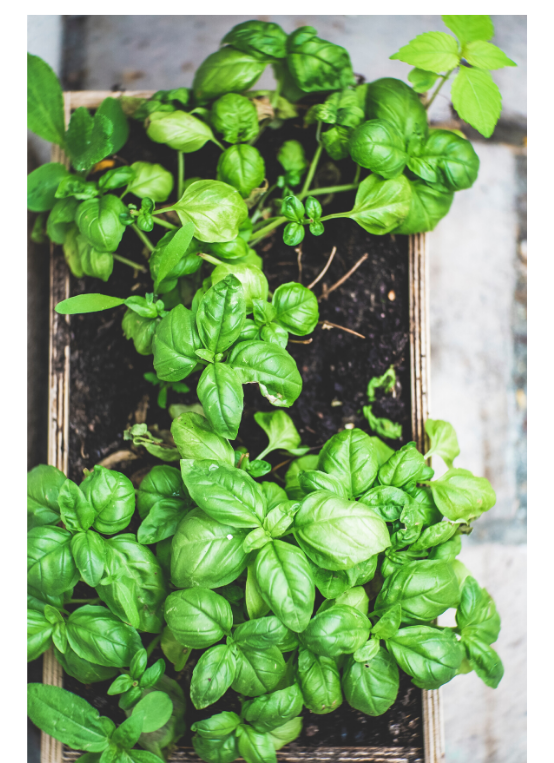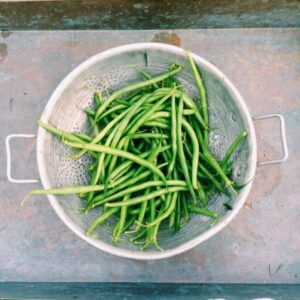regenerative agriculture and what we can do

“Nature is all abundant…Nature suggests hope, joy, abundance, belief, regeneration, allowance, sharing, love, beauty and acceptance.”
― Sanchita Pandey, Lessons from My Garden
Welcome to my weekly Monday meditation – right now I am meditating on regenerative agriculture. I have been studying the book Food Fix by Mark Hyman, MD and it just so happens he was recently a guest on the Goop podcast. In the podcast How We Vote with Our Forks he talked with Gwyneth about farmers being supported to increase regenerative agriculture and what we can do on a personal level. The podcast really resonated with me. After listening I felted compelled to look into the subject. I took it as a sign really, that regenerative ag is something I need to research, something I need to become involved in.
What is regenerative agriculture?
This is a very simple post about regenerative ag. I have just started to delve into it and there is so much to learn but I am very excited, very optimistic. It is hard to define in a simple way, but I found a simple definition by Emily Laurence in an article for Well and Good. “Regenerative agriculture essentially describes farming practices that restore soil quality, improve local biodiversity, and increase carbon capture to benefit the environment.” Even more simply, regenerative agriculture is a farming philosophy that looks to heal, or regenerate, the earth.
Simply start
From my research so far I’ve learned several ideas about regenerative ag and what we can do today:
- Compost. Start a compost pile or purchase a bin. If you are in an apartment or small space just google “compost in an apartment” and you can find plenty of options.
- Frequent your local farmers markets.
- Look at labels, know what you are buying.
- Reduce your food waste.
- Get involved. Educate yourself and your community. Support farmers, innovation and policies.
- If possible, plant your own garden!
What I am doing
An interesting article from Forbes that reminded me you can start small, the little things do matter. I save all my coffee grinds, and use them in the garden or put them in my compost bin. We also have a compost pile. Instead of throwing away vegetable or food scraps, I can put them in the compost bin. We are doing better every day in eliminating food waste, and I am trying to focus on a mostly vegetarian diet. Now is the time for farmers markets, the ones that are able to open now, so I will definitely frequent them. I look for locally grown goods and look at the labels when I am at the grocery. Simple things really, but as Dr. Hyman says “Your Fork Is the Most Powerful Tool to Transform Your Health and Change the World.”
Summer Garden Soup au Pesto
Ingredients
- 2 handfuls fresh green beans, stemmed and snapped in half
- 5 French fingerling potatoes, chopped
- 1 large tomato, chopped or 2 small
- 1 zucchini
- grated parmesan or gruyere for topping
- salt, pepper to taste
Pistachio Pesto
- ½ cup pistachios shelled
- 1 cup basil leaves packed cup
- ¼ cup Parmesan freshly grated; or ⅙ cup nutritional yeast
- 3 cloves garlic peeled, and coarsely chopped
- 1/2 cup extra virgin olive oil or less if you want a thicker pesto
- salt and pepper
- Creme de Cassis
Instructions
- Wash and cut green beans into 1 inch pieces. Put them in a pot with potatoes, tomatoes, salt, pepper. Add 6-8 cups of water and cook for 1 hour.
- Spiralize the zucchini, cut strands into 2-3 inch pieces, add to pot and cook over low heat until zucchini are al dente.
- When ready to serve, add pesto to soup, little by little, stirring to incorporate. Add soup to bowls and sprinkle with cheese.And as my kitchen towel says “All that remains is to leave it to everyone to appreciate the loving virtues of this dish.”
Pistachio Pesto
- In food processor or blender pulse the pistachios, basil, garlic, Parmesan or nutritional yeast, salt and pepper together until finely chopped. Next, while processor is still running slowly drizzle in olive oil. Scrape down sides and pulse again. Taste for seasoning and enjoy! ~When I make my pistachio pesto I add a splash of cassis – it’s my secret ingredient, it goes perfectly with pistachios and just adds a touch of sweetness, magic actually.~
Love, joy, hope and regeneration. À bientôt!

Kermit dit: « Ce n’est pas facile d’être vert » ….Faux!!
Grande lecture aujourd’hui! Mon cerveau se sent plein et le cœur est heureux!
“Always pass on what you have learned.” — Yoda.
“Smaller in number are we, but larger in mind.” – Yoda
Merci Reine Verte.